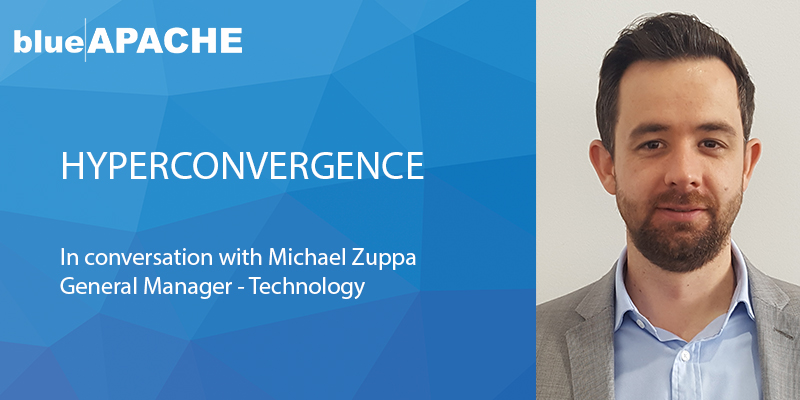We chat with Michael Zuppa, GM of Technology at blueAPACHE, to learn about hyperconvergence and what it could mean for Australian businesses.
What is hyperconvergence?
In recent years there has been an industry trend towards convergence including the rise of cloud computing and software-defined data centre.
Hyperconvergence replaces the need for disparate hardware components in a legacy stack with a software-centric architecture that includes compute, storage, networking, hypervisor and unified management in a single box.
It is a fairly new concept and one of the fastest growing methods of deploying infrastructure in the data centre.
What are some of the benefits of hyperconvergence?
The main drive for hyperconvergence is to reduce infrastructure clutter and lower the cost of infrastructure ownership. It’s a way of achieving cloud-like economy of scale and cost without compromising on resilience, flexibility and reliability.
For many organisations comprehensive data protection can be a daunting, complex and expensive affair. Hyperconvergence incorporates backup and disaster recovery into the stack, thus drastically improving recovery point objectives (RPOs) and recovery time objectives (RTOs).
Centralised management is another benefit. The integrated storage, servers and networking devices are designed to be managed as a single system from a centralised interface. This means all ongoing operations can be managed remotely even when resources are spread across multiple physical data centers.
How is hyperconvergence different from converged infrastructure?
Hyperconvergence is an extension of the converged infrastructure approach.
With converged infrastructure, hardware and software are bundled together to simplify management and minimise compatibility issues. However, each of the elements – compute, storage and networking – are still discrete and can be separated, while other components like WAN optimizers, backup and disaster recovery remains outside the stack.
Hyperconvergence takes the concept of converged infrastructure one step further with a more seamless approach and greater levels of automation and abstraction. It tightly integrates not just the storage, compute and networking elements, but also incorporates backup, disaster recovery and WAN optimisation.
What are some key things to consider before implementing hyperconvergence?
When considering the move to a hyperconverged infrastructure, business should think about which workloads stand to benefit the most from it. Mixed workloads with predictable resource requirements are best suited for hyperconvergence.
Another consideration is business continuity. While integrated backup and disaster recovery is a salient benefit of hyperconvergence, it may not address the more granular needs of some organisations, such as maintaining offline copies of your backup data. In such cases, businesses might need an additional third party solution tailored to meet more specific requirements.
Is hyperconvergence right for you?
In order to understand if this is the right solution for you, start with your business drivers and identify where hyperconvergence can optimise existing IT resources.
Also look closely at your data retention, archival and offline backup requirements and evaluate if the backup offering in the hyperconvergence stack can meet all regulatory and compliance obligations that your organisation is subject to.
For consultations on hyperconvergence and how your organisation can benefit from it, Michael can be reached through our Melbourne office.

